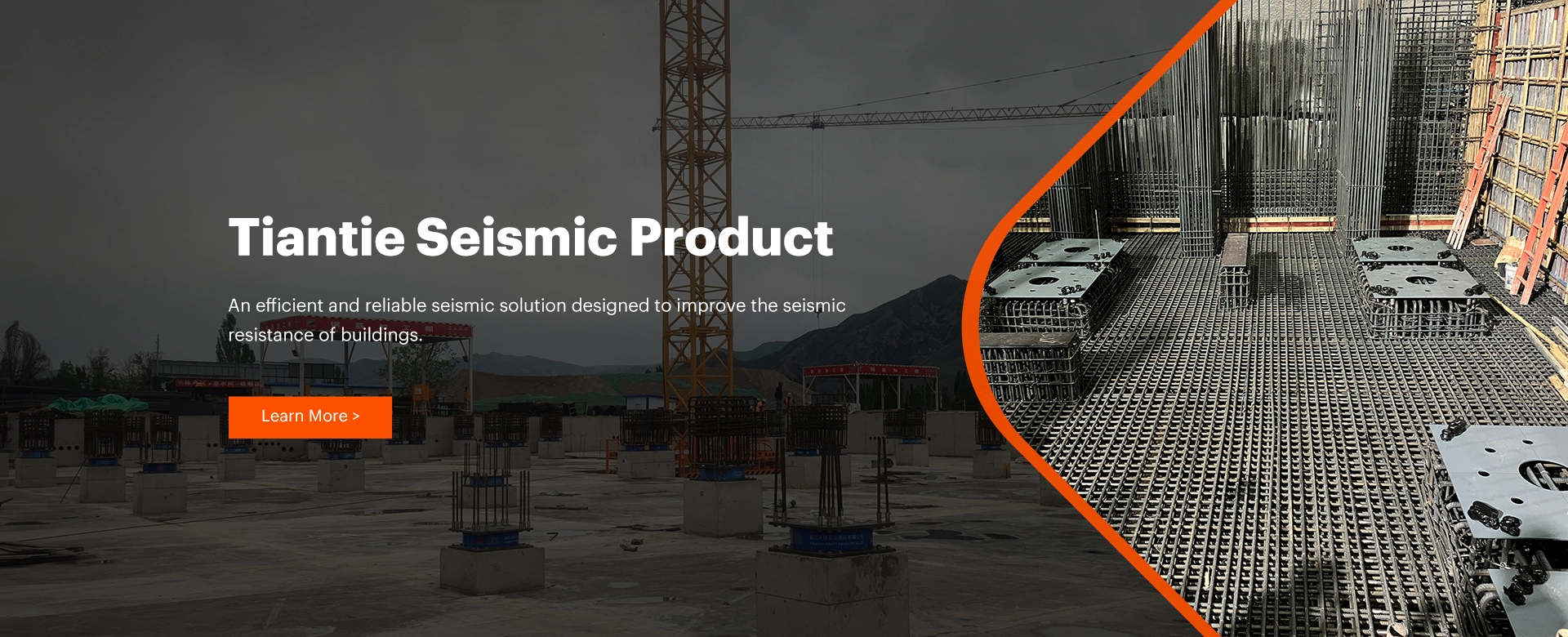
Types of Seismic Isolators For Buildings
Bearings for seismic isolation devices as a layer of flexible system are set between the superstructure and foundation of the building to change the vibration characteristics of the building structure (prolong the natural frequency of the structure). During an earthquake, the deformation of the flexible system converts the horizontal shaking of the upper structure into horizontal displacement of the flexible system, isolating and dissipating most of seismic energy transmitted to the upper building structure, thereby greatly improving the earthquake resistance of the building (the isolation effect can reach 50%-80%).

Shock Absorbing Products
Shock absorbers for buildings, also known as seismic dampers or base isolators, are designed to absorb and dissipate the energy from earthquakes and other seismic activities, reducing the amount of damage a building may sustain. They work by increasing the flexibility of the building and reducing the forces transmitted through the structure.

Viscous Dampers
A viscous damping (vibration) device composed of high-strength metal cylinder, piston, guide rod, sealing elementand viscous damping fluid.
A Buckling-Restrained Brace (BRB) is a type of structural brace used in buildings and bridges to resist seismic forces.
A Plate Friction Damper (PFD) is a type of energy-dissipating device used in structures to reduce the impact of seismic forces.
Apply automated workshop production, and strict quality management system to ensure product quality.
A Viscoelastic Damper is a type of energy-dissipating device used in structures to reduce the impact of seismic forces, wind vibrations, and other dynamic loads.
A Tuned Mass Damper (TMD) is a device used in structural engineering to reduce the amplitude of mechanical vibrations in structures such as buildings and bridges.
An Eddy-Current Tuned Mass Damper (ECTMD) is a type of tuned mass damper that uses the principle of eddy currents to provide damping.
Company
ABOUT TIANTIE
Zhejiang Tiantie Science & Technology Co., Ltd. is a Chinese high-tech enterprise for seismic isolation devices. Tiantie successfully listed in Shenzhen Stock Exchange GEM. (Tiantie’s share code is 300587) and has a market cap of 1.85 Bio. USD. At present, Tiantie has formed three major industrial layouts in the field of track structure vibration and noise reduction, lithium compounds and building vibration reduction and isolation, and has multiple production and manufacturing bases throughout the country.
Keyfacts:
Founded: 2003
Revenue: 268 Mio USD (Group 2022)
Employees: 940 (Group)
Competences: Noise and Vibration Control, Rubber Technology, Chemical (Li)
Industries: Railway, Buildings, Industry
Headquarters: Tiantai, Zhejiang, China
Affiliates: 20

Shock absorbers for buildings, also known as seismic dampers or base isolators, are designed to absorb and dissipate the energy from earthquakes and other seismic activities, reducing the amount of damage a building may sustain. They work by increasing the flexibility of the building and reducing the forces transmitted through the structure.

Shock absorbers for buildings, also known as seismic dampers or base isolators, are designed to absorb and dissipate the energy from earthquakes and other seismic activities, reducing the amount of damage a building may sustain. They work by increasing the flexibility of the building and reducing the forces transmitted through the structure.
2025-01-20 00:00:00.000
The Advantages and Functions of Viscoelastic Dampers in Buildings
As we all know, viscoelastic dampers are widely used as efficient damping devices in high-rise buildings, bridges
2025-01-06 00:00:00.000
Viscoelastic Dampers: Efficient Vibration Control Devices
Definition of Viscoelastic DampersA viscoelastic damper is a damper that uses viscoelastic material to absorb vibrational energy. Its construction is varied
